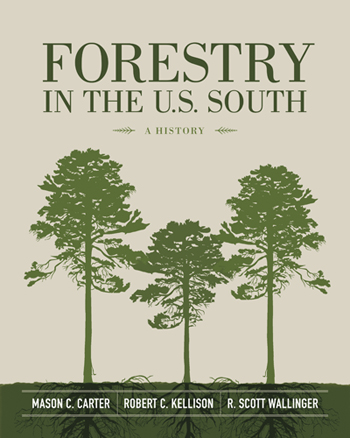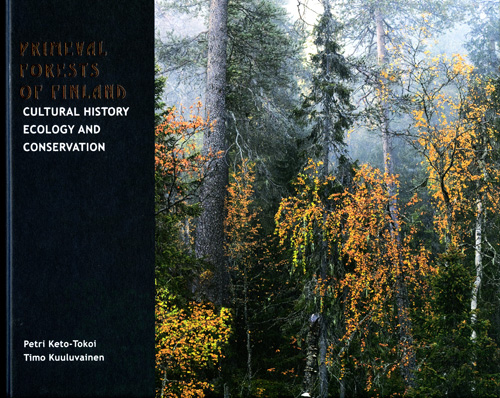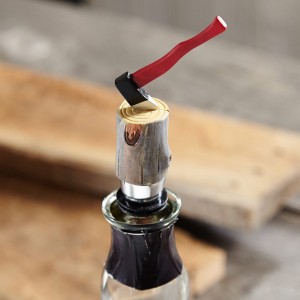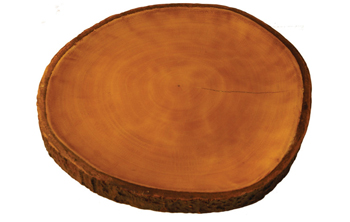2015 Peeling Back the Bark Holiday Gift Guide
The holiday season is fully upon us, and we here at Peeling Back the Bark want to make sure your gift-giving needs are covered. Below we feature a few items suitable for all the hard-to-please forest history fans on your holiday gift list.
Books are always a great option, and we would be amiss if we didn’t point out a new work co-published by the Forest History Society and Louisiana State University Press: Forestry in the U.S. South: A History. This book explores how, since the mid-twentieth century, the forests of the U.S. South have made significant commercial and environmental gains through collaborations between industry, universities, and government agencies. The history behind these alliances, the success of sustainable forest management, and the evolution of private forestry in the South are all captured in this book, which provides a fascinating and immensely detailed overview of the people and organizations responsible for the revitalization and long-term successes of southern forestry. Forestry in the U.S. South is written by FHS members Mason Carter, Robert Kellison, and Scott Wallinger. Wallinger was also a past chairman of the Forest History Society board of directors.

Two other new books of note would not only look great on a recipient’s coffee table, but are well worth reading as well. The first examines one hundred years of forestry in Texas through the history of two influential state organizations. A Century of Forestry, 1914–2014: Texas Forestry Association and Texas A&M Forest Service provides an illustrated account of Texas’s forest history, detailing important events such as the founding of state and national forests, the establishment of a state tree farm system, developments in forest research, urban forestry initiatives, and the founding of the Texas Forestry Museum. The book also reveals how the Texas Forestry Association and Texas A & M Forest Service have transformed the state’s natural landscape. One hundred years ago, expansive stands of virgin longleaf pine had largely disappeared because of lumber industry practices, along with unsuppressed wildfires. Deforestation had also led to widespread soil erosion that was affecting the state’s streams and rivers. Into this vacuum of forestry leadership entered the Texas Forestry Association (TFA), which was established in 1914 to promote forest conservation in the state. TFA members, led by William Goodrich Jones, a banker turned conservationist, continued a decade-old quest to create the Department of Forestry, now called the Texas A&M Forest Service (TFS). With that, Texas became the first state in the nation to establish its state forestry agency as part of a land-grant college. Since their creation, TFA and TFS have worked to establish pine seedling nurseries, fire control projects, and state-administered forest areas. With its large format and attractive presentation, the book would make an excellent gift for anyone interested in Texas history or forestry history in general.

Another new book that would be a natural fit for home display is Primeval Forests of Finland: Cultural History, Ecology and Conservation, by Petri Keto-Tokoi and Timo Kuuluvainen. This book celebrates the cultural and ecological importance of Finland’s natural boreal forests. Keto-Tokoi and Kuuluvainen open with a discussion of how we define a “natural” forest and how such forests cannot be viewed in absolute terms: environmental factors mean that forests have different and changing states of naturalness. The authors then delve into the role of the forest in Finland’s art and folklore and how it has served for centuries as a national symbol. In fights over forest conservation in Finland throughout the twentieth century, nature conservationists have proven to be effective even in periods of economic growth and development. The natural forests are treasured and widely considered too valuable to sacrifice for short-term economic gain. Nevertheless, conservationists and forest industry tussled over the protection of the North Lapland wilderness areas in the latter part of the twentieth century. The book’s visuals—the large, full-color photos, maps, and illustrations—and beautiful and engaging.

Looking beyond the world of books brings us to several other gifts for those with an interest in forests and forestry.
Artwork always makes a great gift, and you can’t go wrong with this John Muir Trail Print which would improve the look of any wall. The same image is also available on a t-shirt.
For the distinguished gentleman on your list who loves wood products we suggest the following accessories. The Wood Tie and the Etched Walnut Wooden Bow Tie are both unique wooden fashion items not just for lumberjacks.

For the beverage fan on your list we give you two unique ways to handle your beer and wine.
The Lumberjack Beer Bottle Opener is an opener in the shape of an axe, with a real wood handle and a notch cut into the back for opening brew caps in the home or in the woods. 
For the wine drinker we offer the Lumberjack Bottle Stopper to seal your bottles with a tree stump topper complete with a small ax cutting into it.

Party hosts may also like this Mango Wood Platter with Bark, providing a unique way to present appetizers or other items.

You can further outfit your home with Tree Branch Candle Holders. These 3-tiered tree branch candle holders accent the glow of a candle to create the perfect rustic focal point for any table, mantle or counter top.
For the lumberjack on your list with an unruly mane or beard, we suggest the Saw Comb. This attractive mini saw with a cherry wood grip can cut through even the worst of tangled hair.

Enjoy and happy holidays!

